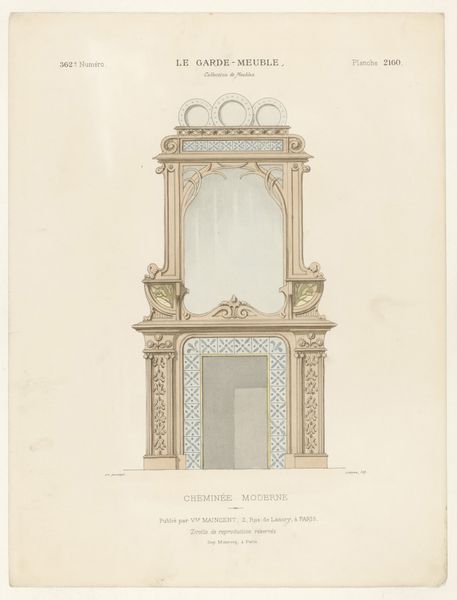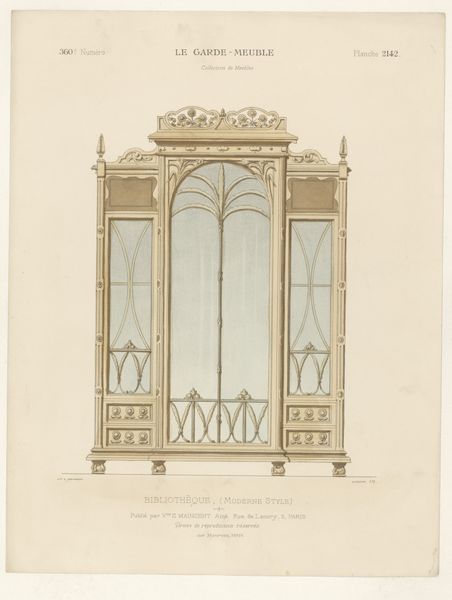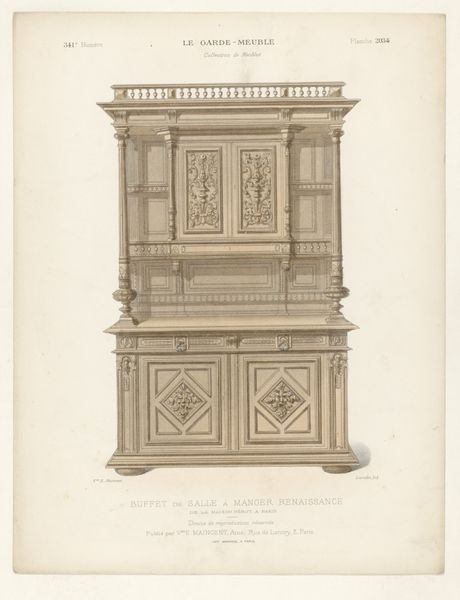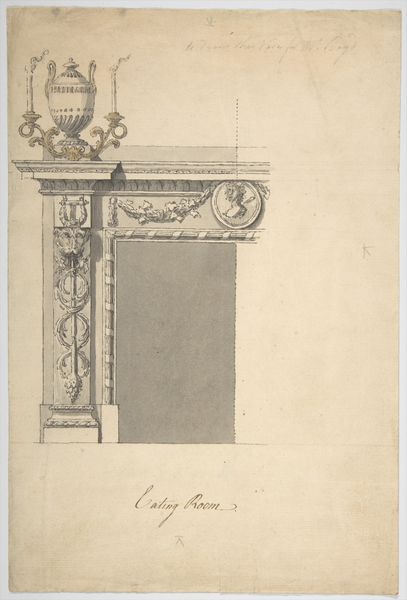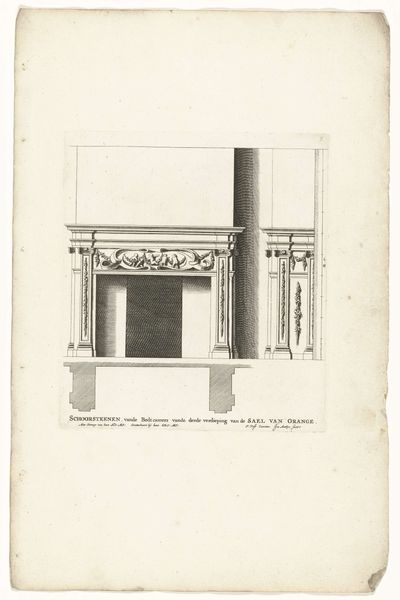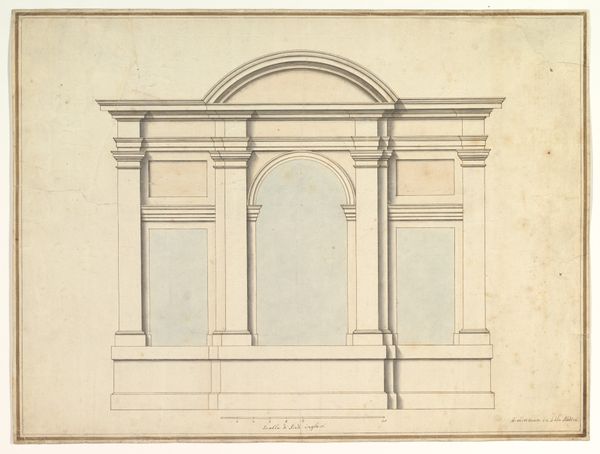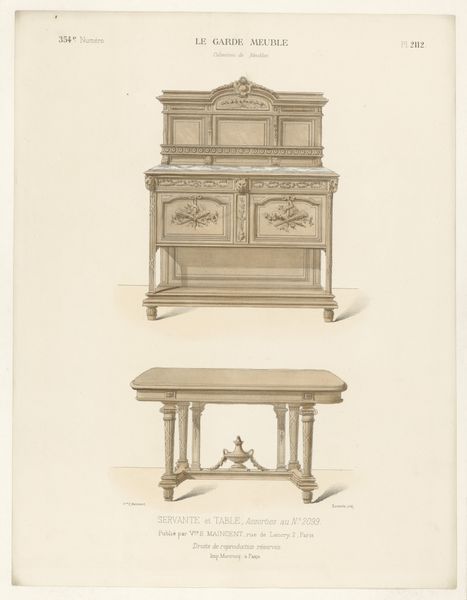
drawing, print
#
drawing
#
art-nouveau
# print
#
form
#
geometric
#
line
#
decorative-art
Dimensions: height 358 mm, width 275 mm
Copyright: Rijks Museum: Open Domain
Curator: Here we have “Kast en tafel,” a print, presumably a drawing of a cabinet and table from between 1895 and 1935 by Léon Laroche. It’s labeled ‘Le Garde-Meuble.’ Editor: My initial feeling is one of muted opulence. There's a stillness, a sort of elegant restraint, in the way the design is presented through the precise linework of the print. I want to know what it’s made of! Curator: Absolutely, I think the print's function is key here. This piece likely served as a promotional illustration, showcasing furniture designs within the thriving decorative arts movement of the late 19th and early 20th centuries, highlighting an aspiration for design-driven lifestyles accessible perhaps only to a wealthier segment. Editor: That’s right; but I immediately think of the craftsmanship involved. Imagine the actualization of these drawings, from selecting suitable hardwoods like oak or mahogany, to the careful carving of those ornate legs and that elaborate top piece on the cabinet! Curator: I see that, and thinking about how that craftsmanship intersected with, say, political movements, this artwork gives some evidence about how the commercial market could leverage artistry. The piece uses art to sell domestic lifestyle, connecting furniture design to social standing in Paris at the turn of the century. Editor: Right! I mean, consider how the designer must balance aesthetics with practical functionality. That impacts the way furniture making becomes a trade, with individual workshops or maybe even early forms of industrial production arising to meet this aspirational market demand that you were talking about earlier! It raises questions around labor, skill, and access. Curator: Yes, absolutely! That tension speaks to the larger dynamic between the art world, commerce, and evolving societal values. The print acted as a crucial touchpoint for communicating those ideals. Editor: Exactly! It's not just about beauty or decoration. The print is a tangible record of these interconnected forces – a kind of social commentary. Curator: I completely agree; through this visual design, we glimpse the lifestyle aspirations but also the mechanics behind creating desire. Editor: Yes, seeing the furniture-making trade in such vivid design form certainly illuminates its economic, social and cultural value, then and now.
Comments
No comments
Be the first to comment and join the conversation on the ultimate creative platform.

